
The upcoming Temple Outer Gate building is quite a large model, so we're going to split the build instructions into 2 blog posts. Thankfully it's not quite as scary as assembling the 5-level castle, though!!
Here's the first half of the build - a guide on how to print and assemble the first level of this two-storey building.....
For reference, all these pieces were printed at 0.2mm layers, with 5% infill, on an FDM printer. Apart from the statues, NO print supports are required for any of these parts.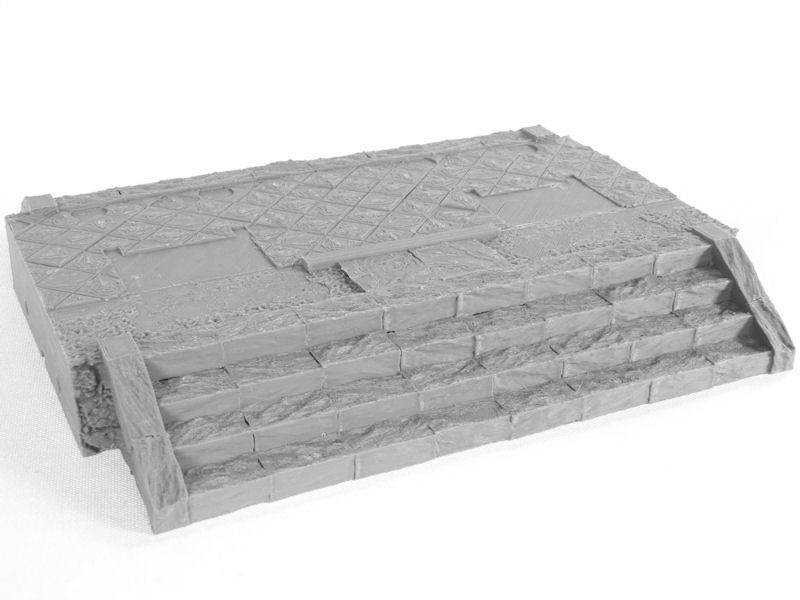
£ All the parts for this temple outer gate building can be printed on a 125mm² printer bed, but if you're lucky enough to have a larger print bed you can choose to print the combined pieces instead (also included in the download set).
The base section for the gate building is 240mm wide in total, and I printed this in one piece.

£ Next you'll need to print the main sections of the first level, all upside down. There are 4 of these, but again I was able to print the combined model.
Please note that there are 2 built-in print supports on the model (circled in red in the above photo, holding up two thick beams), and these should be removed during assembly, as shown.
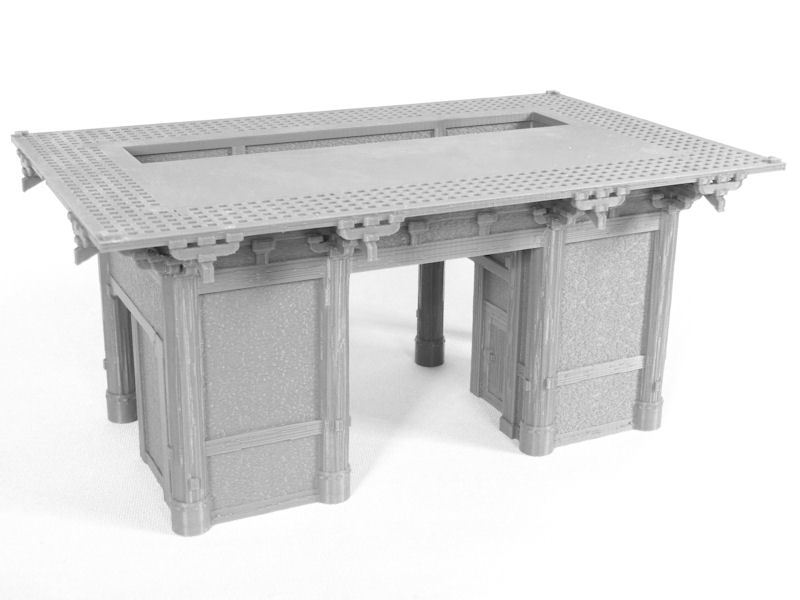
£ This is what the main section looks like when assembled. There are also 4 tiny joining pieces glued on the top - one in each corner. These are helpful in lining up this level with the next level correctly, but they are not essential.
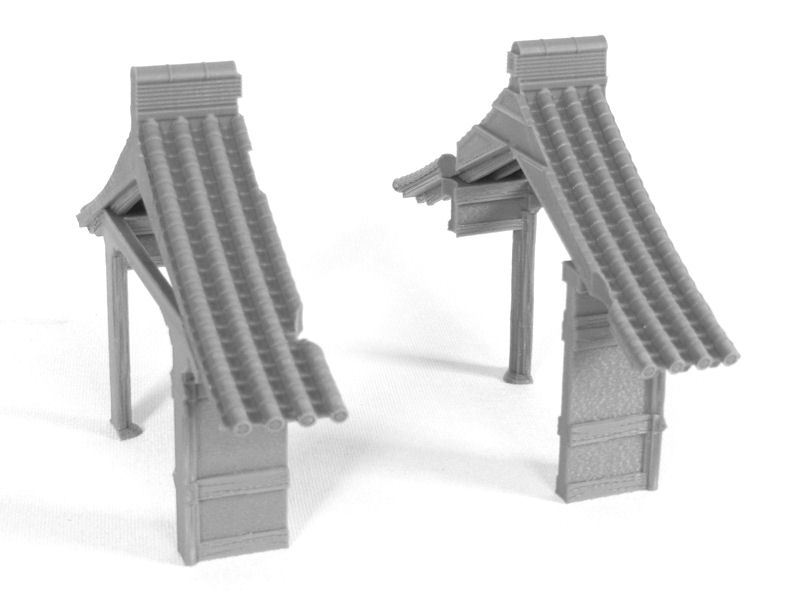
£ You could use this gate building as a stand alone building without the base section or adjoining pieces if you prefer, but if you are using the base section, then you will need to print these small side pieces. They connect with other straight or corner pieces from the Temple Walls set.
As usual, these do not require print supports either!
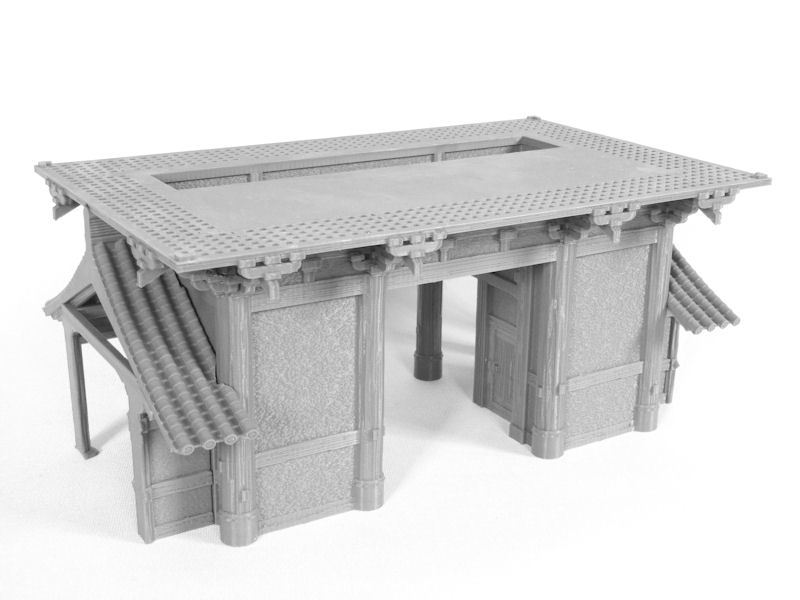
£ This is how those two side pieces look attached to the main building. I would advise you not to glue them on just yet, as it will be much easier to paint as separate pieces.
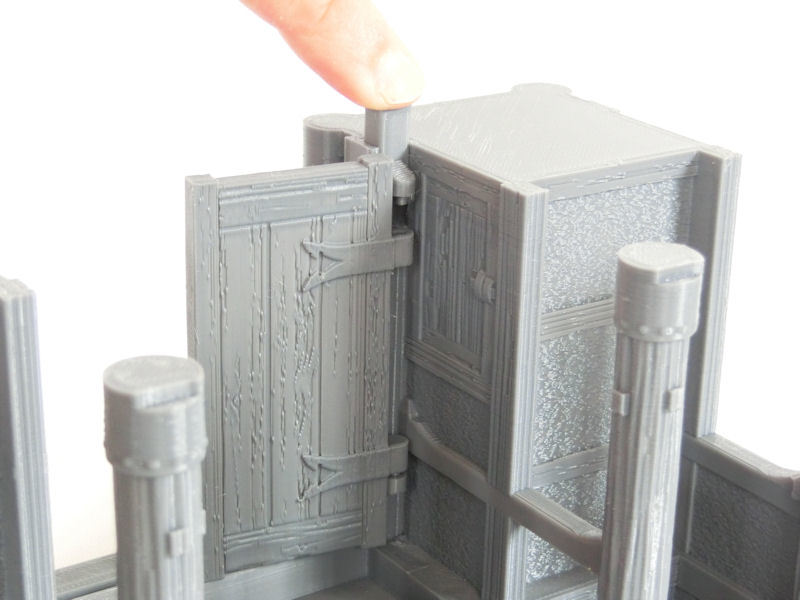
£ Next you'll need to print the two massive gates and the two matching hinge posts. Turn the building upside down, carefully slot a gate into the top hinge (which is at the bottom of the photo, because it's upside down!), and then you can gently push the hinge post into the slot to attach the gate firmly.
These can be swung opened or closed during gameplay, or you could glue them permanently open if you prefer.
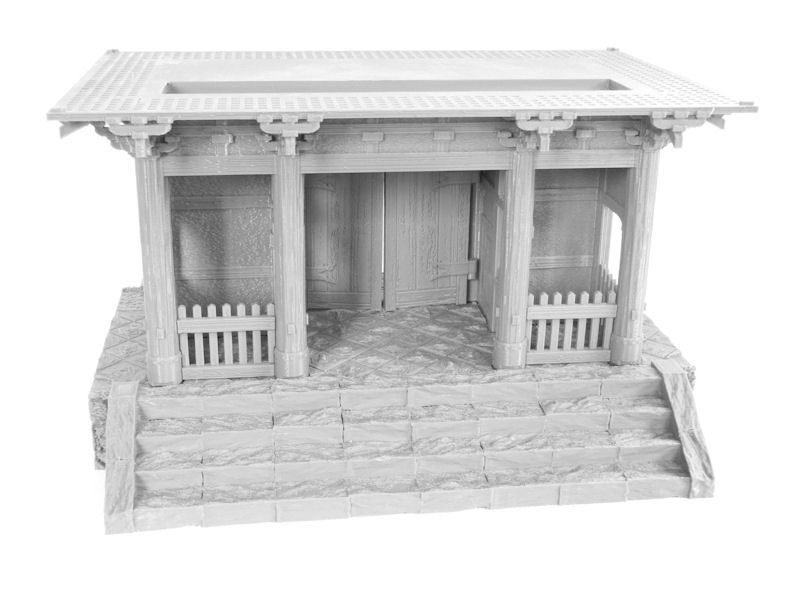
£ The last step for the lower level is to print the two sets of fences, for the statue bays.
I recommend you don't glue these in place yet, as it will be much easier to paint the bays without the fences attached. Also, please remember that the posts fit into the 1mm-deep slots on the base, so your fences will probably be about 1mm higher than the bottom level of the posts - so please glue the fences after you've attached the base!
Part two of the build, and some completed model photos, coming in the next blog!
One of the unique features of the new Temple Outer Gate is the pair of deity statues either side of the gateway.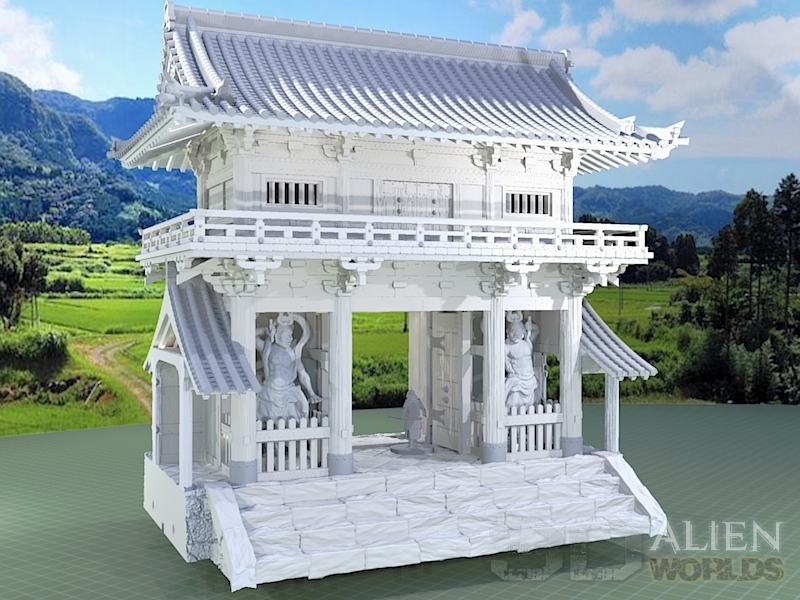
£ Both statues are quite large, standing about 80mm tall from base to top.
The first time I tried printing these statues I set Cura to use "tree-supports" to support the bottoms of their tunics and hands and elbows. Unfortunately I'd never used tree supports before and both statues failed about 2~3cm up. I obviously didn't have the settings quite right, and eventually some of the finer parts snapped off and got the rest of the print tangled up.
Failure! 😭
So, rather than tweak settings again and again until the statues printed properly, I decided to edit the statues to create a second set of pre-supported statues, which even the most clumsy of FDM printers (me included!) could print without too much difficulty. Both versions (supported and unsupported) are included in the download.
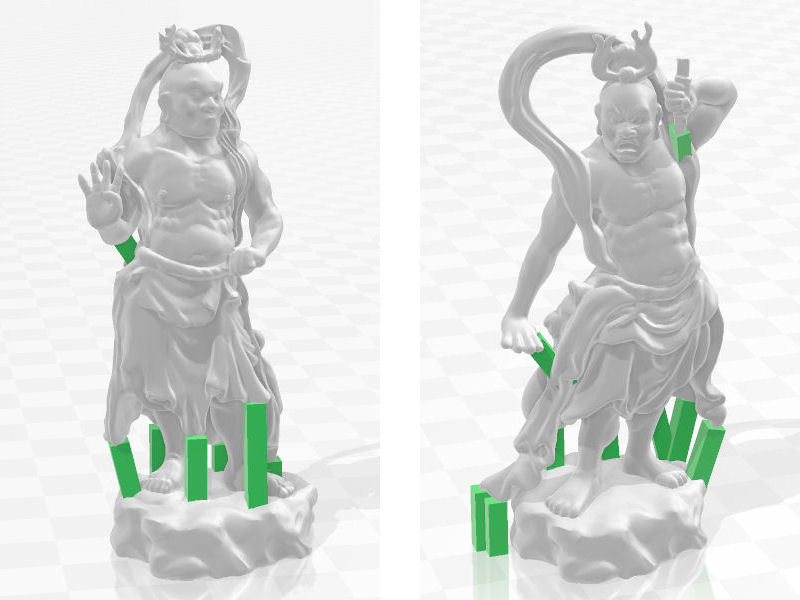
£ These are the pre-supported versions of the statues. You'll see that there are a number of 3mm-wide green posts added around the hem of the tunics, and a couple more holding up hands and elbows. These are the built in supports, and meant that I was able to print both statues without any other Cura-added supports at all!
Success! 😊
I printed the first statue at 0.2mm layer height, just to check it worked, and printed the other statue at 0.1mm layers. To be honest, there was not much difference between the finished statues (you can compare them below) - the main differences being the smoothing of shallow curved surfaces like tops of feet and heads.
I would also recommend slowing down your printer for these statues - I halved my normal 40mm/s speed (that I usually use for all terrain), down to 20mm/s. The infill was still only 5%.
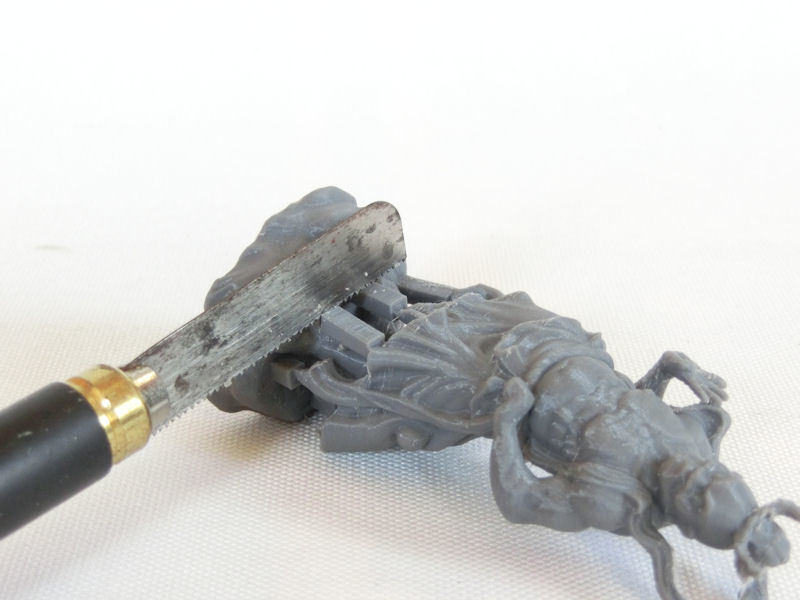
£ Once you've got your models printed, you can burn off any wispy strands with a quick pass of a lighter, and then you'll need to carefully remove the built-in print supports.
Here's how I did that...
You could simply snip them off with cutters, but I find that sometimes the thickness of the cutters will force the two sides apart and crack the model along the layer lines. Since these were pretty delicate pieces, I decided to first saw through each of the print supports with a fine-toothed saw blade, as shown in the photo above. In addition to separating both sides, it gives you a spare 1mm of movement, which helps later when you're snipping off supports.
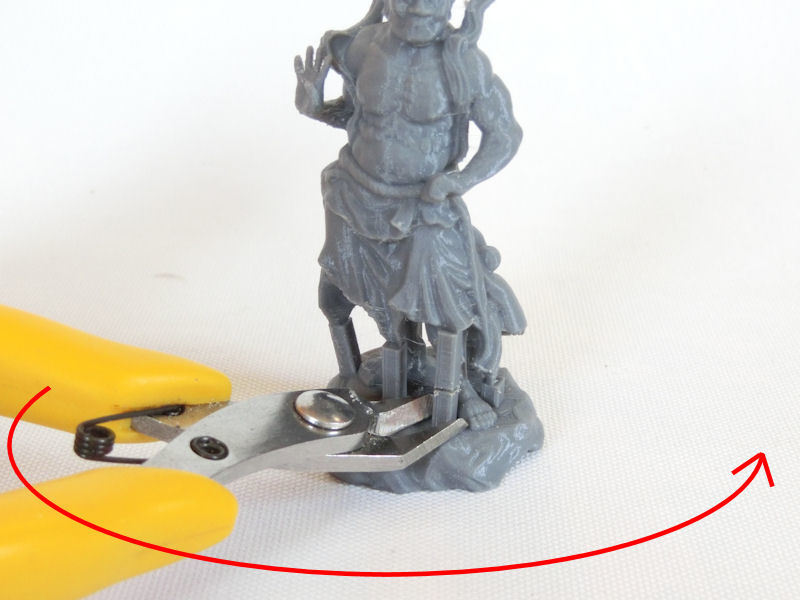
£ Next, gently grasp the end of a print support between the ends of your cutters, and rotate the cutters around the support post (as shown by the red arrow in the picture above). Just spin the cutters back and forth in a semi-circle, while squeezing gently on the handles.
After a few passes, the cutters should grind/cut through the support, and you can remove it without damaging the model.
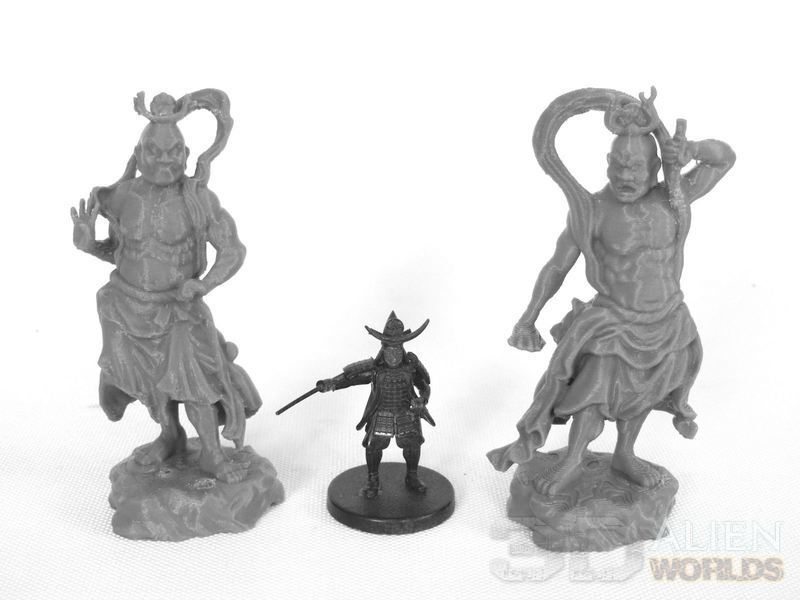
£ The last picture to show you today is this photo of the two statues. The one on the left was printed at 0.1mm layers, and the one on the right at 0.2mm layers. If you look very closely, you can see the layer lines on the top of the feet, on the statue on the right. The rock was also a bit rougher.
Next blog I'll be showing off the assembly of the gate building itself, so watch this space!
The modular Samurai Temple Walls set has been available for a couple of months now, and since then we've brought out a few smaller pieces.... the Ruined Castle Wall, the Ruined Stone Wall, an updated version of the Wooden Lantern, and most recently the Jinmaku Curtains set.
But now it's time for something BIG!!!
Today we're showing off final previews of the Temple Outer Gate building, but first let's take a quick look at the temple walls set it's designed to fit....
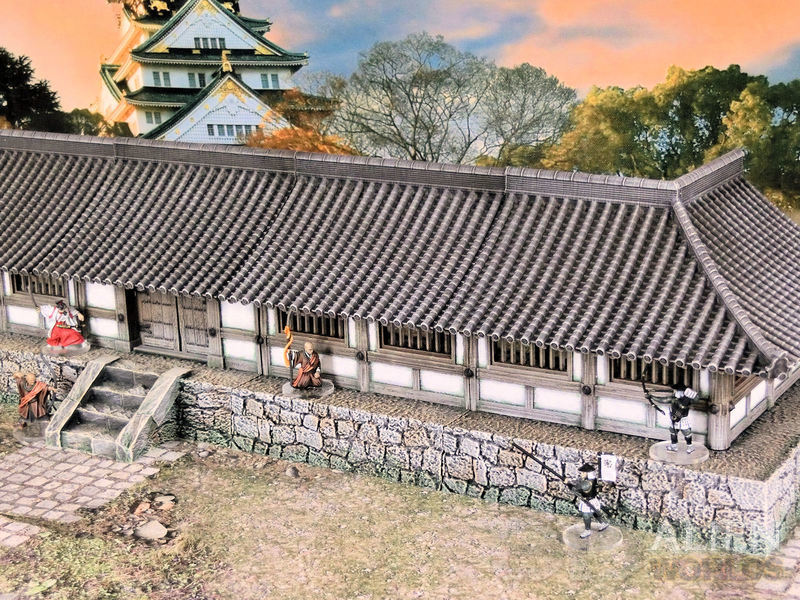
£ This is the existing Temple Walls set, comprised of 3 sections - a straight section, a corner section, and a doorway section.
Well, you could use those little doorways to get in and out of the temple area, I guess, but every proper temple complex in Japan tends to have a very ornate and very LARGE front gate in the middle of those walls. So without further ado, here's the new outer gate building we'll be releasing very shortly....
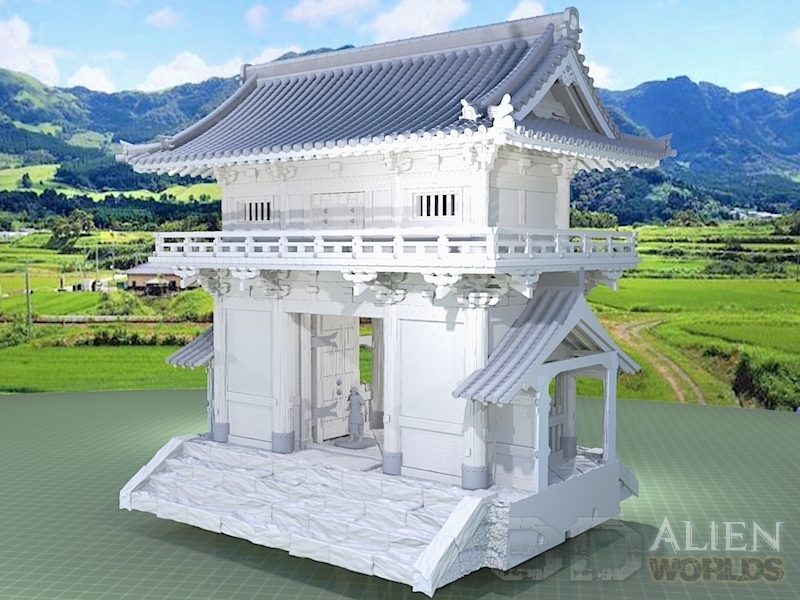
£ Here's the front view of the gate building, mounted on its optional base. Those steps are almost 22cm wide, and the building itself is 24cm wide at the balcony! The roof is slightly wider, because it overhangs everything else!
Technically, temple gate buildings don't usually have functioning gates (it's merely a gateway between everyday life and the spiritual), but it seemed odd not to include a way to defend a temple in war-torn feudal Japan. They are of course hinged, so you can choose to have them open or closed.
Behind each open gate there is a small (fixed) door in the wall, one of which leads up to a trapdoor to the second level. Again, technically the second level and balcony of a rōmon temple gate building would be purely ornamental, but it seemed too good an opportunity to miss, so I've included a playable interior and surrounding balcony.
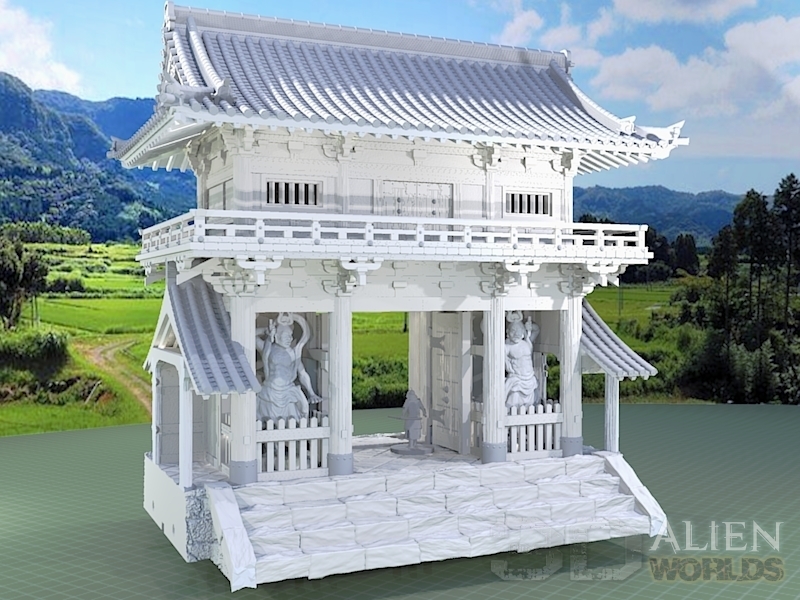
£ The rear of the temple gate (the 'inside' side) is where it gets very cool - to either side of the central gateway we have a bay with a large Niō deity. These statues are included in the ZIP file, scaled to a perfect 80mm height to fit the bays.
Supported and unsupported versions of the statues are included, and as you'll see from the next blog post, it's entirely possible to print them on an FDM printer successfully.
Stay tuned for a guide to printing those awesome statues!
It's hard to photograph white curtains, I found out, but I gave it my best shot! Oh well, hopefully you'll enjoy the photos anyway?
The latest addition to the samurai collection is officially released today - the Jinmaku Curtains!
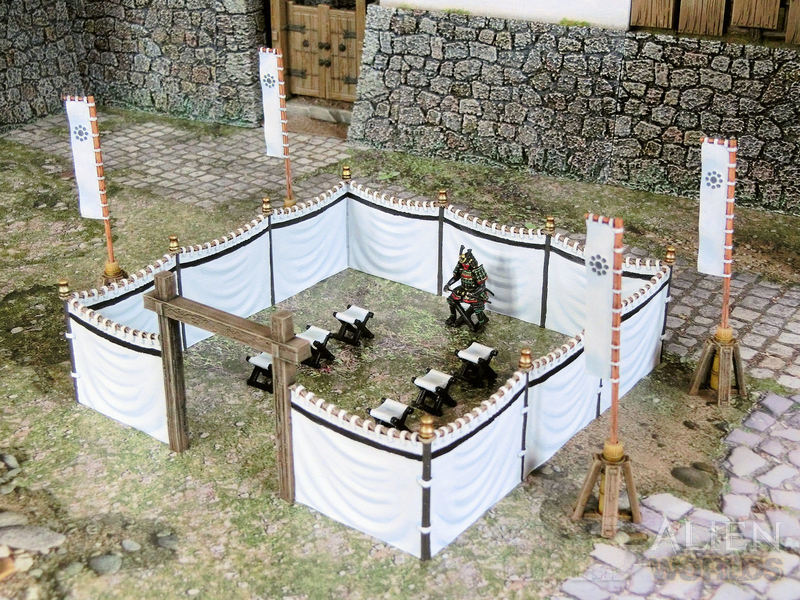
£ If you've been following along on the progress of this set, you'll know that I printed two versions of the curtains (see previous blog) - the first at 100%, and a second at 120%. For these photos, I have chosen to paint the larger 120% print, because it also featured the horizontal line sculpted on the model.
Anyway, here we see Lord Kowai sitting in his command post, awaiting his generals. Let's hope they don't displease him by arriving late!
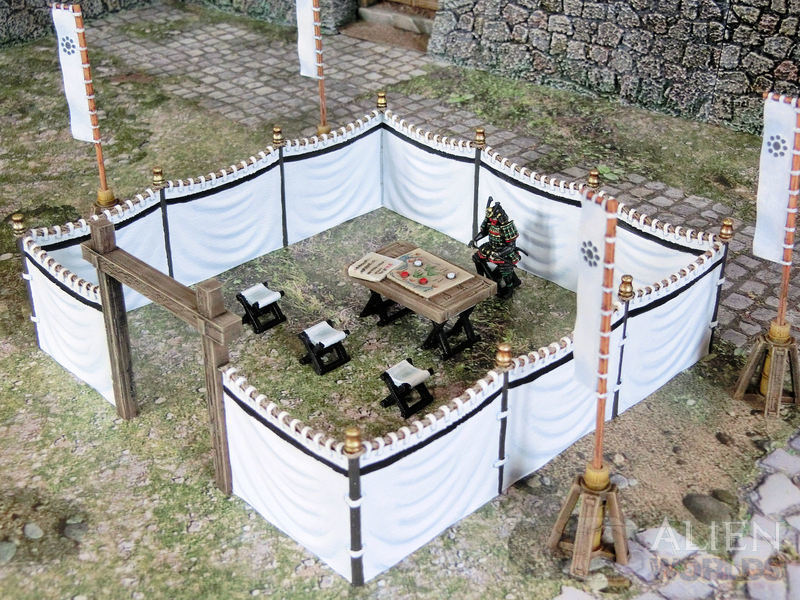
£ Here's a more intimate strategy meeting, with battle plans and scout reports laid out on the map table.
The horizontal stripes along the top of each curtain are sculpted into the model, and this makes it very easy to quickly and accurately paint them in.
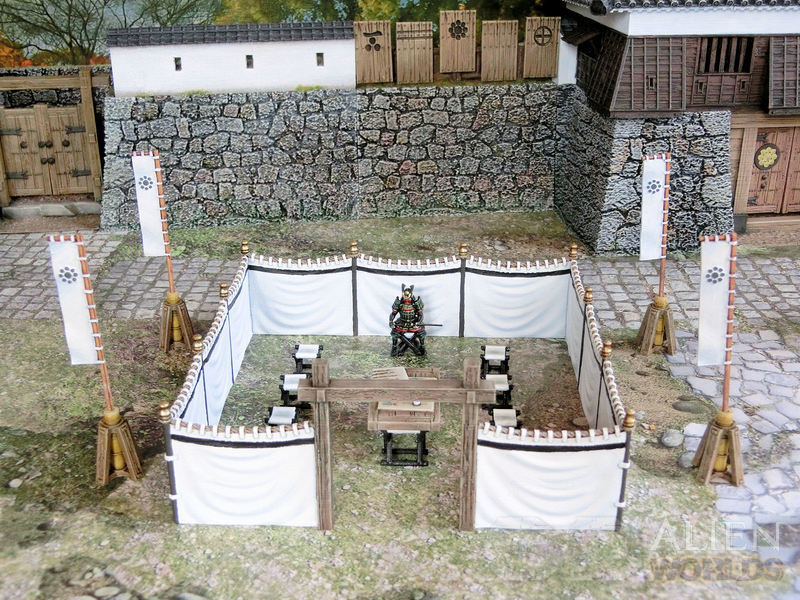
£ The nobori flags (available separately) make a great battlefield display when combined with the curtains set.
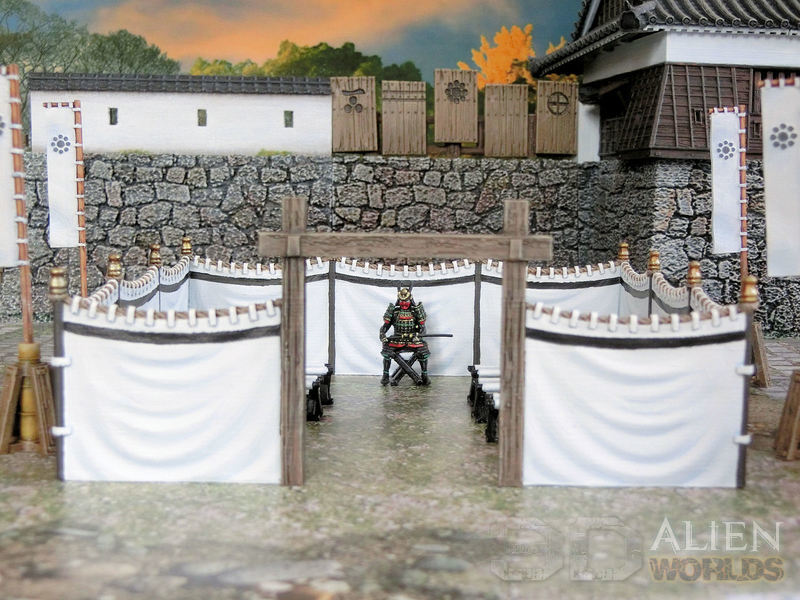
£ Lord Kowai awaits your arrival.....
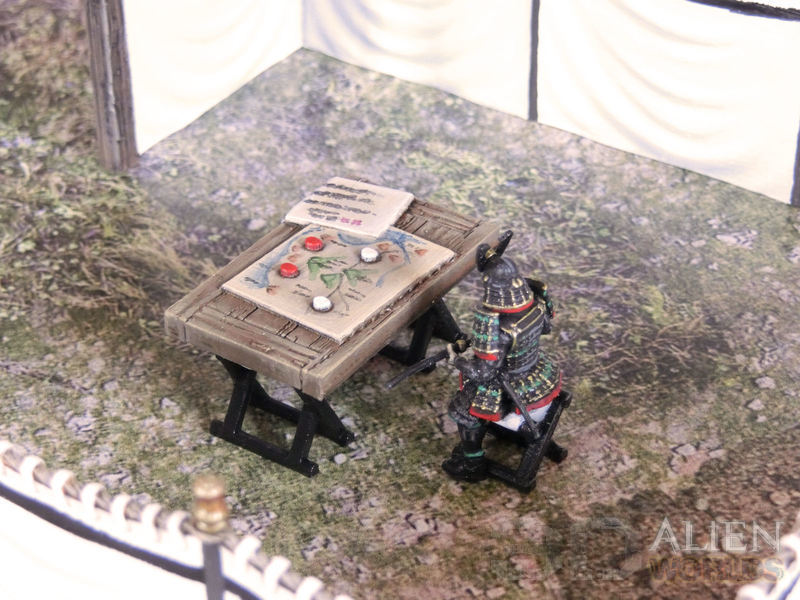
£ This was my attempt at painting a message scroll (on the top right corner) and then drawing in a map around the four markers sculpted onto the table.
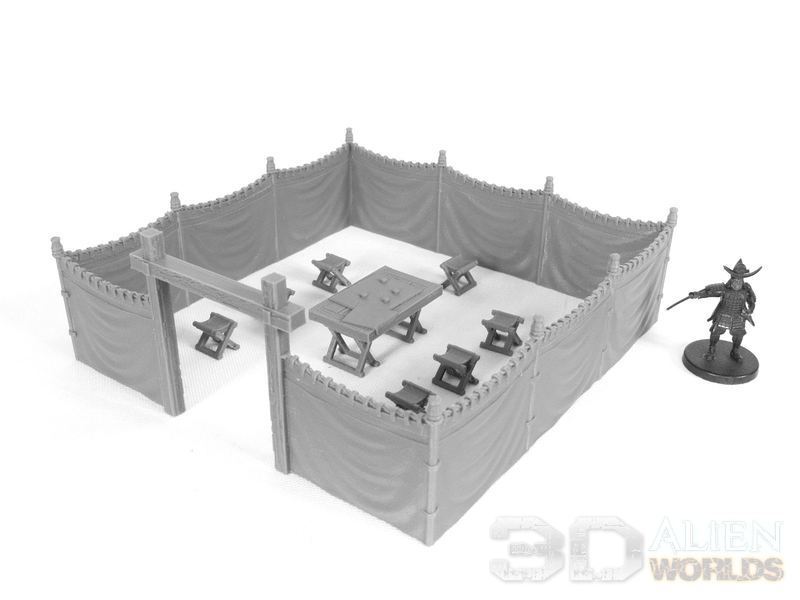
£ The Jinmaku Curtains set is available for download from today.
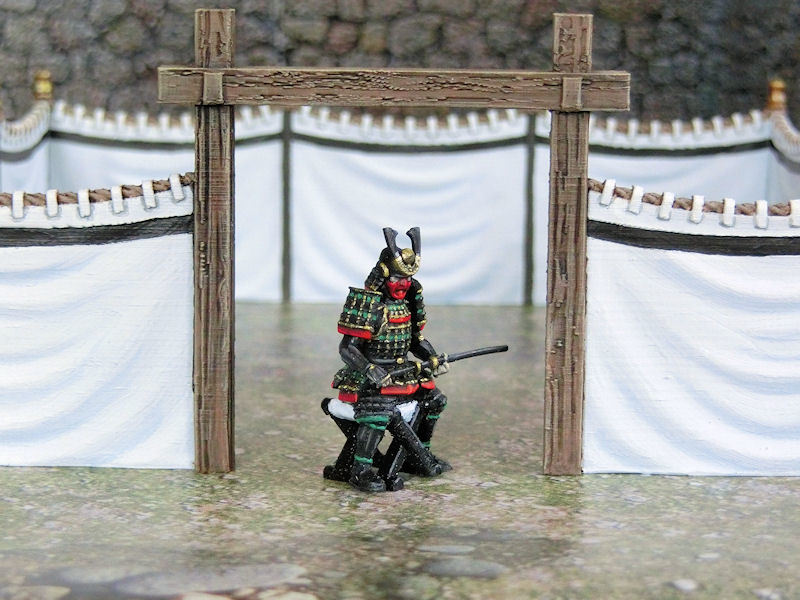
£ MODELLING TIP: Here's the model I used for Lord Kowai. With a tiny bit of filing, you can neatly fit a plastic cavalry model onto the stools. I had this extra pair of legs left over from the Warlord Games mounted samurai set, and just stuck on some spare body parts from my bits box.
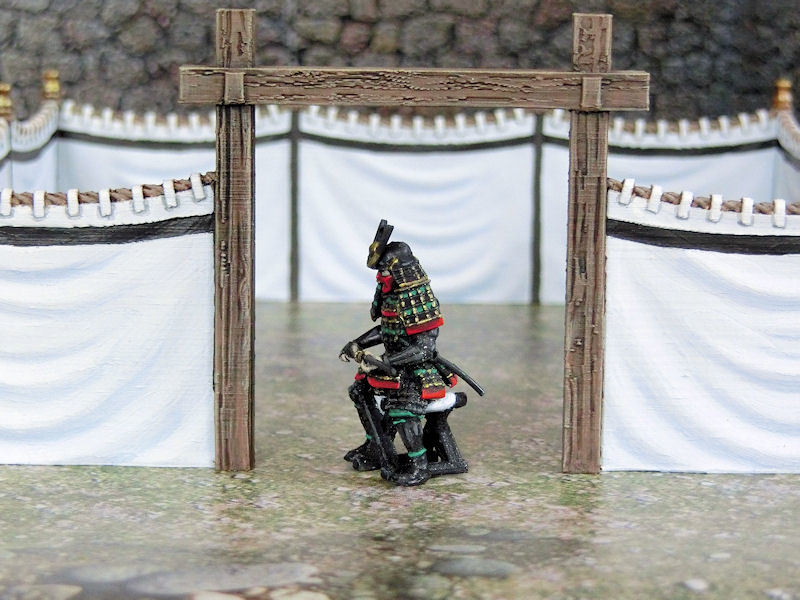
£ With that mask over his lower face, he'd be a pretty intimidating character to face, I think!
We have something new for our samurai range to show off to you today - the Jinmaku Curtains set!
Battlefield curtains, or jinmaku, were used by feudal-era samurai as temporary structures for commanders and military meetings. Jinmaku are also used in festivals and theaters, especially for open-air performances.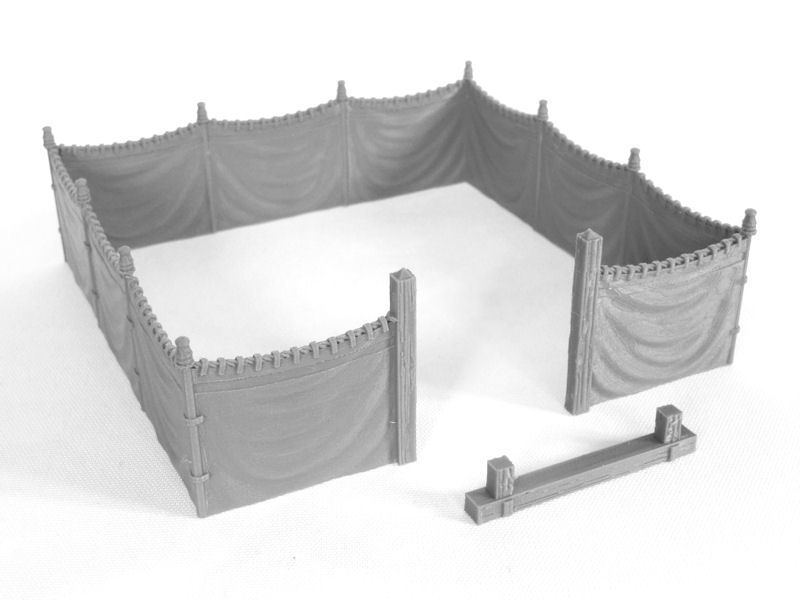
£ The main piece of this set is of course the curtained area. This prints in two pieces, without any supports. As you can see, assembly is pretty easy - just glue the cross beam over the entrance, and you're done!
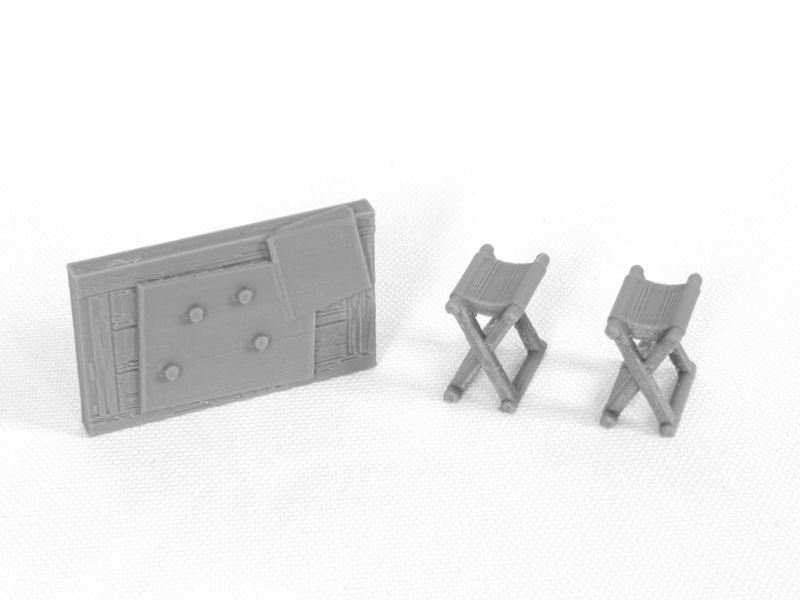
£ The set comes with some stools and a table too, and the table comes in 3 parts, as shown in the photo above. The table legs are these tall foldable stool pieces (supports not required), and should just be glued to the underside.

£ Here's the completed table, with a map and some military force markers, and perhaps a messenger's report?

£ Here's the whole set together, ready for a battlefield strategy meeting.
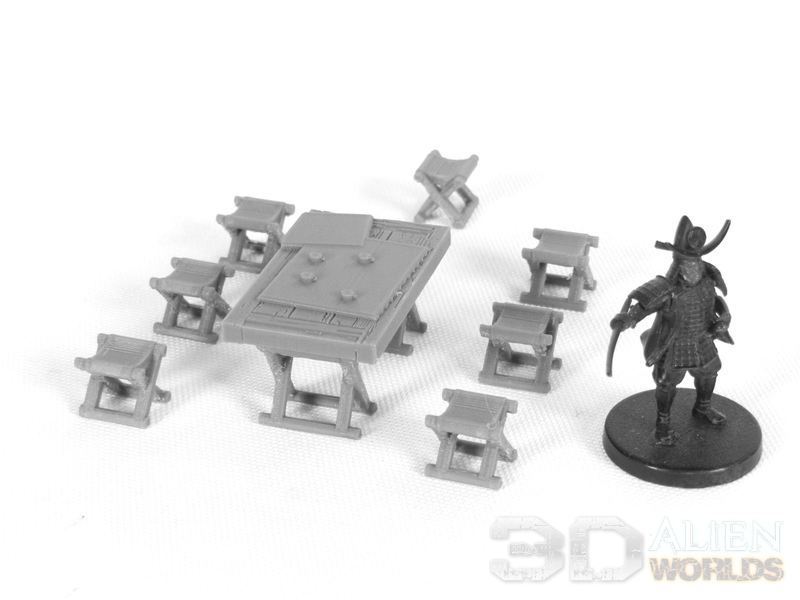
£ I'm planning to use a spare cavalry samurai model to sit on one stool as the 'lord' in charge of the army. The stools, by the way, don't require print supports either!
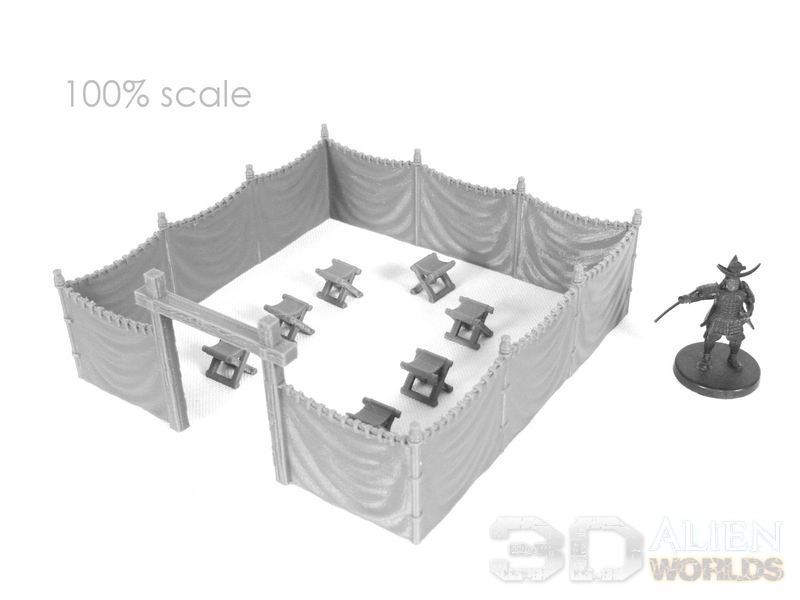
£ IMPORTANT NOTE ABOUT SCALE - These curtains measure 123mm x 123mm (5"x5") when printed at 100% scale (as shown in the photo above), which is the historically accurate size, however you may find this a touch small for wargaming compared to some 28mm figures (because of the bases).
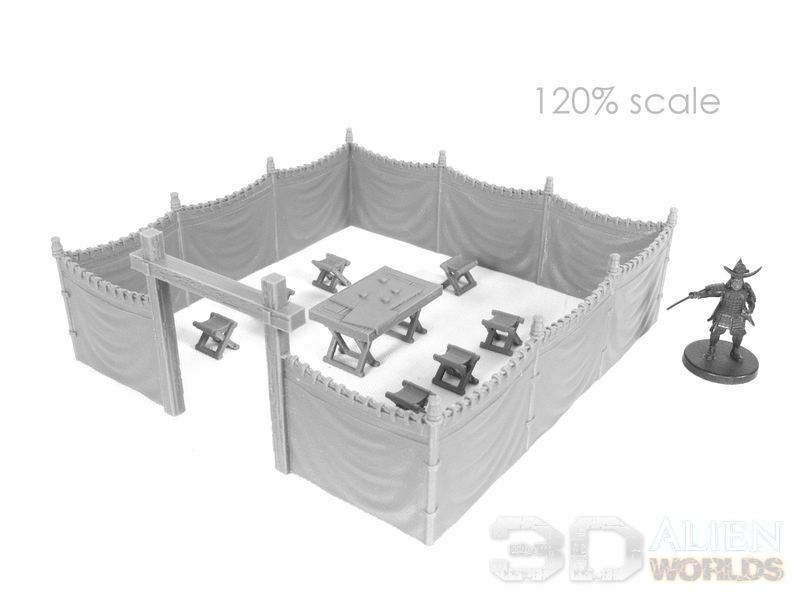
£ So if your print bed is big enough, we recommend printing at 120% scale for a larger jinmaku area of 150mm x 150mm (6"x6"), which just seems to fit 28mm gaming models better. As you can see in the photo above, scaling your curtains to 120% gives them a little extra height and width, which helps balance them against size increases from bases on models.
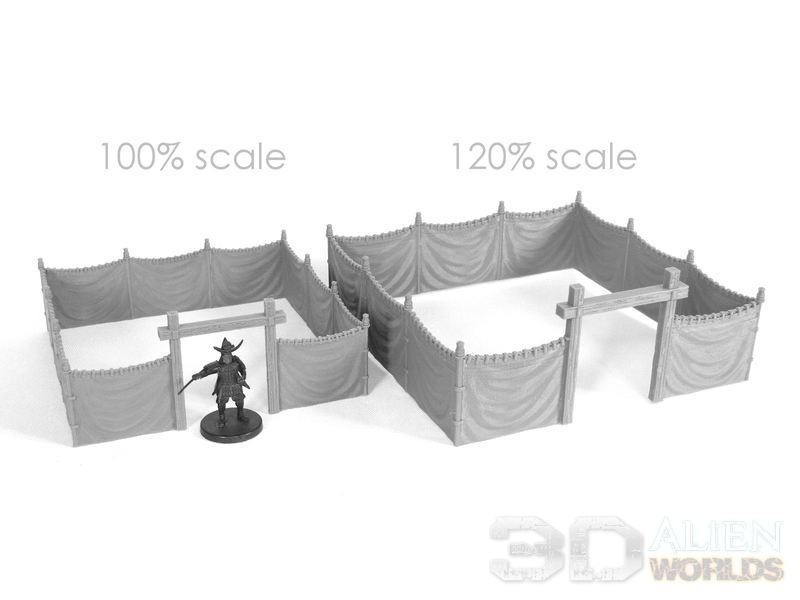
£ Here's a comparison photo, with both scales. The blank version is on the left (at 100% scale) and the horizontal striped version is on the right (at 120% scale). Both blank and striped versions are included in the set.
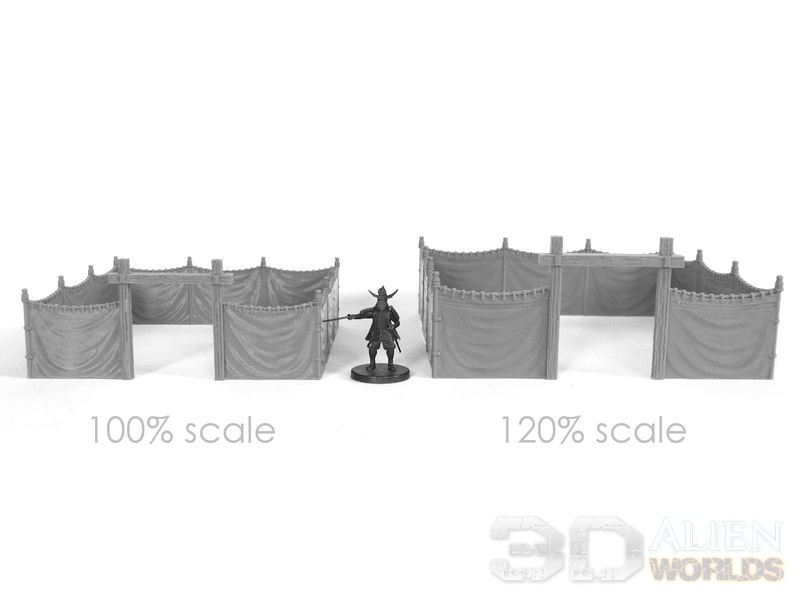
£ So if you can print slightly larger, then we recommend 120% scaling. If you can only print up to 125mm² models (i.e. 100% scaling), then don't worry - it'll still look great!

£ Here's one final close-up photo of the textures on the curtains. They are sculpted with gentle ripples on the fabric, and you can even see the rope strands clearly. This photo shows the model printed at 120% scale in 0.1mm layers, and is the horizontal striped version of the curtains.
This will be hitting the paint desk this week, and should be ready for release very shortly!
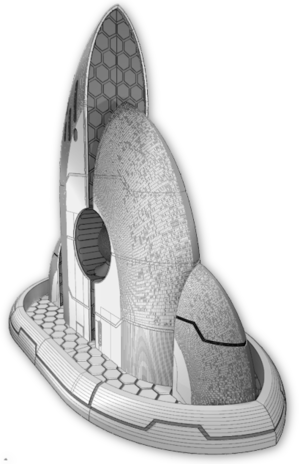
0 Comments :
Write a comment :